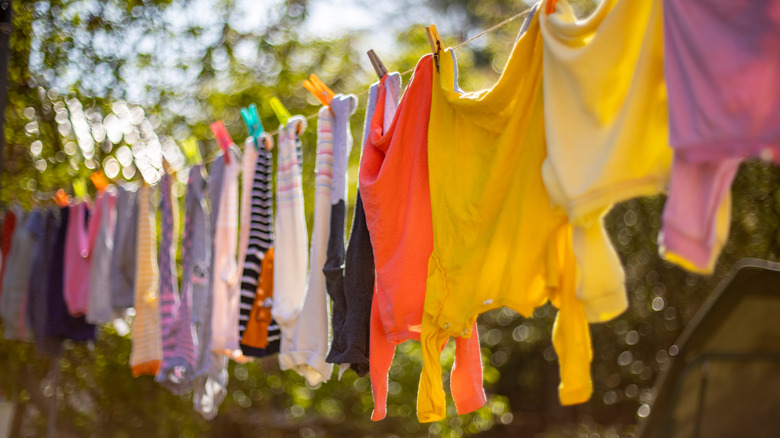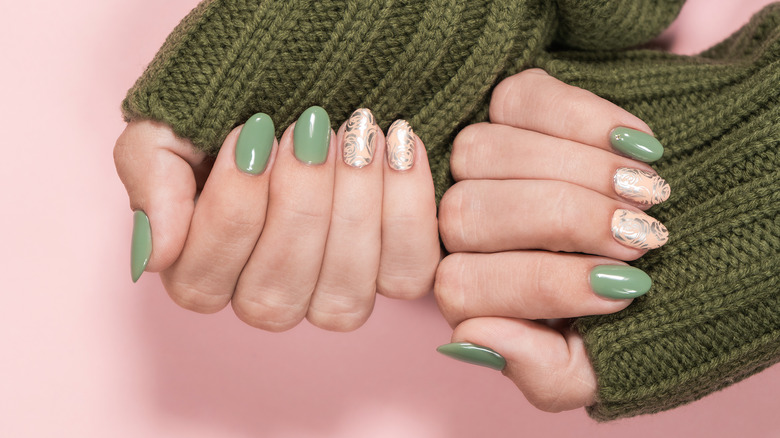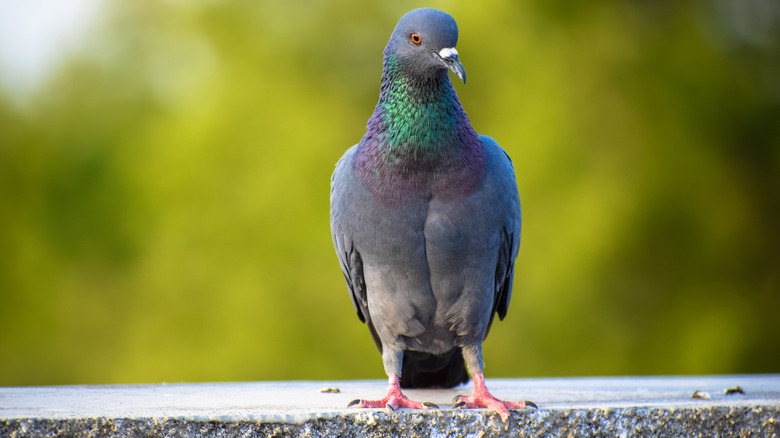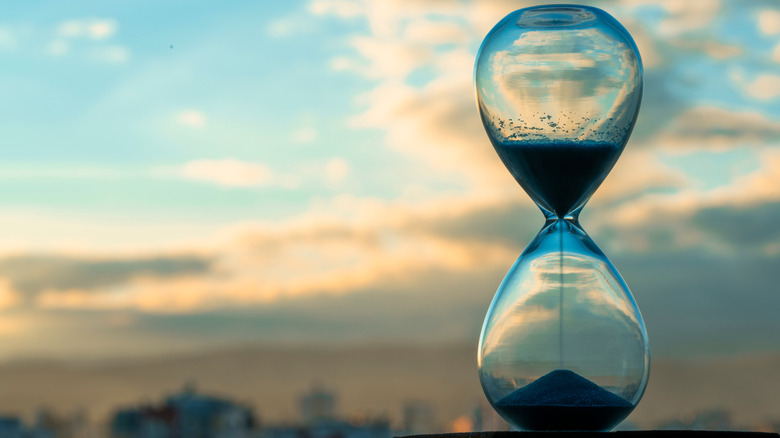Should You Really Dry Your Clothes Outside?
Using the natural environment to dry your clothes can offer a practical alternative to tumble drying. For those who don't have a dryer at home, hanging clothes up to air dry is a must. However, InfoPlease reports that 72% of American homes include a dryer, meaning that the vast majority of homeowners won't have to rely on a combination of time and breezy weather to get the daily or weekly load of laundry finished and folded.
While hanging up clothing to dry the natural way can achieve the desired goal in a pinch, The Spruce recommends steering clear of hanging up clothing to dry outside if you can help it. Exposing your clothing to the outdoor environment can do more harm than good if you aren't incredibly careful with the job. For example, the sunlight can create significant and rapid fading in colored clothing. In short, drying your clothing outdoors is generally ill-advised.
Color fading
The Spruce explains that clothing color fading is one of the most pervasive problems with drying your clothing outside. While hanging up clothes outside can provide increased access to an open-air environment, the intense ultraviolet rays that emanate from the sunlight pouring into your backyard can be immensely harmful. It should be noted, though, that controlled exposure to sunlight can help brighten up your whites and remove other stains from clothing, if done correctly, according to Molly Maid.
Colors fade over time, of course, but placing your clothing in the sunlight speeds up this process and reduces your ability to continue enjoying your staple outfit pieces. Student Hut estimates that the average clothing item is worn ten times before it's discontinued from a person's wardrobe—either thrown away or donated. By drying your clothes in the sunlight, you may inadvertently decrease this figure by fading the vibrant color or pattern that makes the garment feel like a new and trendy asset in your wardrobe.
Animals ruining clothing
In an admittedly tongue-in-cheek experiment conducted by Hopes & Fears, a mathematician worked with the outlet to estimate that a person walking through New York City for two hours has a 20% chance of being pooped on by a pigeon. When expanding the amount of time that your clothing will be left outdoors beyond this two-hour timeframe and accounting for the fact that your clothing will remain stationary while it dries, the chances of taking a hit from one of the flying members of your local area increases.
In addition to flying projectiles that will make you start the washing process again, animals can also affect your clothing in other ways. The Spruce reports that contact with insects can leave spots, streaks, or other marks on your clothing. Some birds, squirrels, and other suburban and urban wildlife may pick at your clothing, fraying the fabric and rendering it entirely unusable.
Drying clothing in the fresh air can be highly beneficial in prolonging the usable lifespan of the item, but only if it's protected throughout the drying process. The fact is that drying clothing outside introduces so many different variables that it can be impossible to ensure a smooth drying process and a guarantee that your items won't be tampered with by local wildlife either intentionally or simply by happenstance.
Drying clothing outside takes time
Little Upgrades estimates that it can take anywhere from 45 minutes (for the lightest fabrics) to around 24 hours to air-dry clothing. And for heavier items like jeans, blankets, or towels, you may be looking at a drying time closer to two days. The time it takes to dry your clothing can play a massive role in the decision to set these items outside on a clothesline or drying rack or simply to use your dryer to get the job done in less than an hour every time.
The Spruce also mentions weather as a determining factor in the time it takes to get any piece of clothing dried. High humidity can throw a massive wrench in any hang drying plans that you may have, elongating drying time significantly.
Obviously, the longer it takes to hang dry clothing, the less viable the method becomes. In a local area that sees significant rainfall, like Mobile, Alabama, the United States' rainiest city according to World Atlas, the increased time takes to return a washed item of clothing to your drawer can be detrimental to routine outfit planning if you are reliant on air-drying as a primary finishing method.



